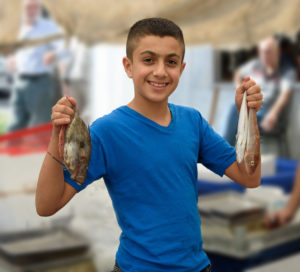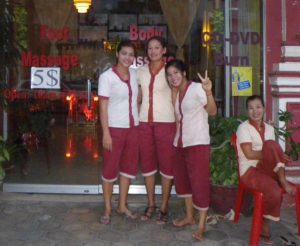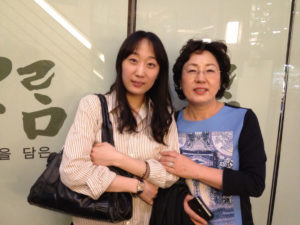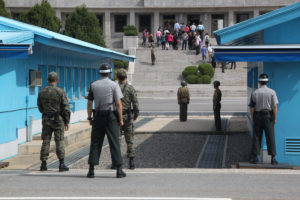What Is “Beyond The Guidebook” Travel?
“We live in a wonderful world that is full of beauty, charm and adventure. There is no end to the adventures we can have if only we seek them with our eyes open.” – Jawaharial Nehru
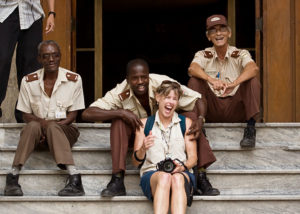 First, let me state for the record I LOVE guidebooks and use them extensively to plan my trips – as evidenced by my overflowing travel bookshelves at home. I take at least one guidebook with me whenever I travel – to better navigate the destination and as a critical reference on the local sights, history, and culture.
First, let me state for the record I LOVE guidebooks and use them extensively to plan my trips – as evidenced by my overflowing travel bookshelves at home. I take at least one guidebook with me whenever I travel – to better navigate the destination and as a critical reference on the local sights, history, and culture.
Being someone who doesn’t like to miss anything, I always visit the “key tourist sights” in any destination. I find they are usually worthwhile (albeit often crowded) – think Paris’ Eiffel Tour, St. Mark’s Square in Venice, and China’s Great Wall. However, I really love to experience the “essence” of a destination and its people. So I seek out opportunities for “beyond the guidebook” experiences, usually by venturing off the well-worn tourist path.
What Do I Mean by “Beyond the Guidebook” Travel?
First, it’s looking for ways to have heartfelt interactions and conversations with the local people. When they see that you are respectful and genuinely interested in them – and their lives and their culture – people usually love to share. For me, these are often some of the most memorable parts of my travels. For example:
- It’s getting away from the tourist zone (and maybe even your tour group!) and walking the town’s back streets to get a glimpse of authentic daily life for the locals. Perhaps it’s watching children playing at the neighborhood park while mothers chat with each other or observing a group of older men playing cards or drinking coffee at the local café – and being invited to join them.
It’s visiting colorful, bustling markets where locals shop and friendly vendors proudly sell their wares. I have found that market sellers are often happy to engage in conversation and even pose for the camera. Of course, they love to see the final photos of themselves on your digital camera screen!
- It’s buying beautiful local handicrafts or art directly from the artisans – then perhaps asking them to tell or show you how they created it. Now that the “relationship ice” has been broken (and some possible shyness dissipated), you can take photos of everyone together (including you). Remember to get a photo of the artist/vendor holding up your new purchase – all of which I frequently do for great trip memories!
- It’s asking for recommendations from your helpful hotel staff or other trusted locals on their favorite sights to see as well as non-touristy places to eat and “not-to-be-missed” local dishes to try.
- It’s taking local transport – such as trams, metro, bus, and ferry – not only to get from point A to B but to enjoy being “one with the locals” as they go about their regular lives. It’s great people-watching and sometimes you get the chance for some interesting conversations.
It’s also seeking out unique, local experiences that can be fun or meaningful but may not be listed or emphasized in your guidebook. For example:
While wandering the colorful and dusty streets of downtown Siem Reap (Cambodia’s gateway town to Angkor Wat), my friend and I passed a small massage shop. There, we were enticed inside by charming local young women standing at the door to enjoy a 30-minute foot & leg massage for just $5. Yep, it was wonderful!
- Visiting the historic Polynesian Spa in Rotorua, New Zealand was a great experience that I’m so glad I didn’t miss. My travel mates didn’t want to go so I went by myself late one evening to enjoy a soak in their natural hot spring-fed outdoor pools – joining a few locals and many Asian tourists (who also love their spas!) At the end, I got a personal tour of the Spa’s huge complex of pools (many of which were not included on my cheaper ticket) by a friendly security guard whom I had befriended by just asking him some questions about the spa.
I shared a delightful and delicious traditional Bibimbap dinner in Seoul, South Korea with an adorable local woman named Hanseul (she’s a nurse like I used to be!) and her mother. They are relatives of my sweet Korean neighbor who happily made the long distance introduction when he learned I was traveling to Seoul (on my own).
- On a rafting trip on New Zealand’s beautiful Kaituna River (near Rotorua), my 6-person raft (plus guide) successfully went over a 23-foot waterfall, which is billed as the world’s highest “commercially navigable” waterfall. It was actually a blast and not that scary – truly! If I had been in town for one more day, I definitely would have gone back to do it again (and I wrote just that on TripAdvisor!)
Lastly, it’s making sure to visit and experience important sights in the “living history” of a country and its people. They’re always fascinating but may not always be “happy” sights. Some examples:
- Touring Robben Island in Cape Town, South Africa where Nelson Mandela was imprisoned for 18 of his 27 years during apartheid. Incredibly, the tour guides are former political prisoner inmates with great stories. You can read my post on Robben Island.
- Visiting the excellent but sobering Genocide Memorial Museum in Kigali, Rwanda to better understand how the horrific “100 days of terror” in 1994 came to be and how the country has amazingly healed from the genocide.
Touring the Demilitarized Zone in South Korea where you can literally stand 50 yards from the DMZ center line, at which North & South Korean guards vigilantly stand watch. It’s a WOW experience!
- Visiting the fascinating “War Remnants Museum” in Saigon, Vietnam where visitors gain interesting insights into the Vietnamese perspective of what they call the “American War!”

